|
Darya Buzovkina, Moscow
release technique
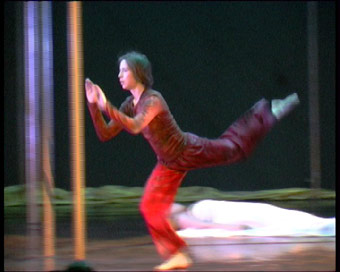
| |
|
|
description
release teachinque
"The class will help participants to gain awareness of
their body as a whole structure and assist in revealing their inner
potential. It will influence their search of new ways of motion by
using imagination and mental processes. It may also be useful in any
dance style." bio
Daria Buzovkina is a dancer, choreographer and teacher
based in Moscow. Daria started dancing at the age of 6 in "the Pioneers
Palace" in Moscow. She studied dance at the dance studio of the house
of Culture ZIL, at Sretenka dance school and at Moscow Ballet Academy
(1993-1998). Being the student of the ballet academy Daria performed in
the play "More Van Gogh" in Moscow Tabakov theater. After graduation
she worked in the State Kremlin Ballet for 6 months. She joined Sasha
Pepelyaev's "Kinetic" in 1999. Untill 2004 Daria participated in all
group's perfomances. Her own original works were used in the
perfomances "One Second Hand","The list of illusion", "Qu'est qu'une
ulve?", "Not There", "There, where jasmin never stops blossoming" and
"The Nest of Choou". She participated in the project of young
independent choreografers and worked with the company "P.O.V.S.TANZE"
in Moscow (2000).
She took classes of Maria Malony, Viky Shick, Tiffany Mills, Andrey
Andrianov (composition), Yana Tumina Axe-theater)-(laboratory), Marika
Hedemyr (Laban-composition), Fiona Millwards, Fin Walker, Lisa Rice,
David Zombrano, Vim Vandekeybus, Alexander Pepelyaev (composition),
Lisa Torun, Jenifer Nudgent, Bruno Chassray, etc.
Since 2000 she has been teaching contemporary dance in the Moscow
Shamber Ballet.
Her own works include solo works "Just..." (premiere-05/05/01) and
"Itself" (premiere-04/06/02), a trio "Thirdly" for Chamber Moscow
ballet (premiere-18/03/02), "Best Before" (premiere-15/12/02);duo
"Always as now" with dancer Eugenia Yakimova and "Snow
maiden"(15/03/2004)with dancer Taras Burnashev from "P.O.V.S.TANZE",
"All the best!" for studio of contemporary dance "Dance M"
(Krasnoyarsk/Russia)-premiere-06/04/04.
With her own project Daria has taken part in the
festivals: TSEH, Moscow 2001 and 2002, Evolusioon, Tallinn 2002, The
International Festival, July 2002 and D'Est en Oues, Paris Dec 2002,
Dublin Fringe Festival, Irland 2002, International Festival, Gomel,
Belarus 2002. Dancespaceproject,New York,2003, TaNZ im AUGUST,Berlin

|
|
Tatiana Gordeeva, Kinetic, Moscow
technique
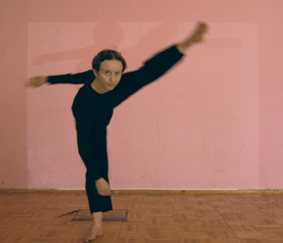
| |
|
|
description
"My class has been built up on the base of
contemporary, modern and release workshops' experience, as well as
broad stage practice including work in the Kremlin ballet for 9 years,
in Sasha Pepelyaev's Kinetic for 9 year and 6-year teaching; and as a
result of my own exploration and research. The main emphasize is directed to design the
relationships between mind and body, quest for an effective and
efficient use of the body energy and search for an authentic and
personalized movement "unit". The body-awareness approach is applied while
examining dynamic alignment of the body structures, articulation of
different body's parts, the sense of volume of body's inner space,
dynamic traveling and centre-periphery ideas.
The lesson includes simple exercises which can serve
as a platform for practicing principals of any dance styles. Those will
be followed by more complicated dance phrases where such principles as
reason and circumstance, fall and balance, pace, inertion, weight and
coordination of jump will be persuaded." bio
|
|
Konnikova&Alberts, PO.V.C.TANZY, Moscow
"Flow Low and in Contact"
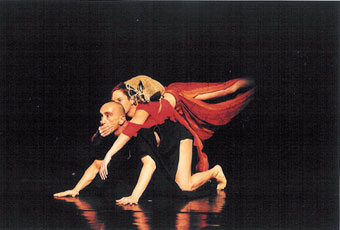
| |
|
|
description
|
|
Nikolay Schetnev, "Another Dance", Arkhangelsk
contact improvisation
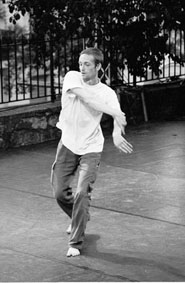
| |
|
|
description
|
|
Yana Tumina, Russian Engeneering Theatre AKHE, S.-Petersburg
lab
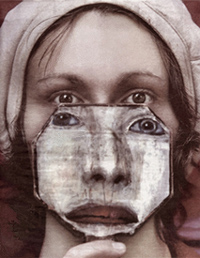
| |
|
|
description
bio
Born in 1972 in St.Petersburg. She has graduated the
Theatre Academy in St.Petersburg and magistrate for directing and actor
teaching. She works as a theatre teacher in the same Academy and as
actress in theatre AKHE. She takes part in all works of the group since 1996
and helps with connecting her classical experience with AKHE's
experimental forms and adapts the group's ideas to dramatic directions.
Jana, like Pavel Semtchenko, works also with different groups as an
actress, theatre teacher, director.

|
|
Jodi Melnick, NY, USA
technique
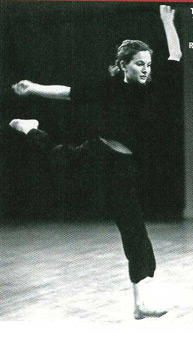
| |
|
|
description
Technique:
Working from the inside out, class begins with a
continuous, thorough warm-up. Focus is on releasing, directing,
and articulating the body. Attention is on the organs, skeleton, and
muscles, bringing awareness to a three dimensional body. This is
followed by learning, interpreting, and adding on to a dance phrase,
composed of both expected and unexpected coordinations, attention
to gesture, details, and the use of the entire space and floor. Compostion: This dance making process will begin with
movement, working with a physical stream of consciousness, developing
one's own physical language, and looking at movement. From here, we
will see how this translates into form, theatrical ideas, themes,
emotion, and a choreographic structure. bio
Jodi Melnick graduated from SUNY Purchase with a BFA in
Dance. She has been a featured dancer with Twyla Tharp, and Irene
Hultman. Currently, she performs and works with Susan Rethorst, Sara
Rudner, and Vicky Shick, and over the past 13 years, has worked with
NYC based freelance choreographers Tere O'connor, Dennis O'connor,
Donna Uchizono, Yoshiko Chuma, and Yves Musard.
2002, she began working with Trisha Brown as an assistant director on
Schubert's 'Winterriese', continues to re-stage the work, and has appeared as a
guest performer in the Trisha Brown company.
As a teacher, Jodi has taught master classes, technique, and workshops
throughout the US, Europe, Australia, Russia, and Asia. Her gift as a
teacher has been to translate movement into a format accessible to all
bodies and all disciplines.
Her choreography has been shown in NYC, Japan,
Ireland, Estonia, and Russia. Her most recent work, spring 2003, a solo
commissioned by Jenny Roche and Temple Bar Properties, Dublin. Ireland,
and, September 2004, a duet for Roche and Nicola Curry, Belfast.
This fall, 2005, Ms. Melnick will present her work at Dance Theater
Workshop, NYC.
Fall 2003, Graz, Austria, Ms.Melnick was part of a new Opera based on David
Lynch's 'Lost Highway', singing (mezzo soprano), again performed in Basel
Switzerland, Spring 2004.
In 2001, she was honored with a Bessie award for sustained achievement in dance.

|
|
Jay T Jenkins, NY, USA
funky jazz

| |
|
|
description
Jazz:
A class that works through the fundamentals of jazz technique and
vocabulary, emphasizing the basic positions and the use of contraction
to build strength. From there J.T's teaching philosophy is the same
whether he is teaching Jazz or Jazz/Funk; a desire to show students how
to bring out the feeling in the choreography! Music ranges from the
musical styles of the 30's and 40's to the present day.
Jazz/Funk:
J.T's Jazz/Funk class combines classical and stylized
jazz vocabulary with Hip-Hop in combinations that allow the dancer
again to connect to the feeling of both the music and the choreography.
bio
J.T trained as a musician, in piano and trumpet; he
studied with Joe Benjamin who played with Duke Ellington. As a dancer
he trained in jazz dance technique with Phil Black and William Chaison
and in modern with Joan Palladino.
J.T's has developed a choreographic movement
vocabulary that combines classical and stylized jazz, modern, tap,
punk/hip hop. He choreographs in feature films, music videos,
industrials and for recording artist's concert tours. He choreographed
the feature House Party directed by the Hudlin brothers and has worked
with Prince, Salt N Pepa, Chaka Kahn, Cyndi Lauper, the Time, Color Me
Badd and many others. He attributes his success in staging movement for
musicians which doesn't detract from their playing for live concert
performances to his own background as a musician. He has choreographed
concert pieces for Ohio State University Dance Theater, the Bolles
Dance Company, Princeton University Dance Theatre and Kean Dance
Theatre.

|
|
Hilary Bryan, SF, USA

| |
|
|
description
BARTENIEFF FUNDAMENTALS FOR DANCERS AND PHYSICAL THERAPISTS (focusing on Patterns of Total Body Connectivity)
(focusing on Patterns of Total Body Connectivity
(PTBCs) Train for virtuosity. Heal chronic injury. Move intelligently.
PTBCs are the basic building blocks of efficient movement. They are
based on developmental movement patterns and closely related to
Body-Mind CenteringR principles (BMC's originator Bonnie Bainbridge
Cohen studied with Irmgard Bartenieff). When you explore your own
internal connections, you improve both function and expression.
Accessing your deep core support increases strength, range, and freedom
of movement. Learn to develop your core strength without becoming rigid
or tense. This workshop uses hands-on techniques, guided movement
exploration, and anatomical imagery to explore functional body
alignment and efficient movement pathways. Connect more deeply within
yourself - realize your movement potential. MODERN DANCE TECHNIQUE based on Laban Movement Analysis / Bartenieff
Fundamentals:
Based on Laban Movement Analysis / Bartenieff
Fundamentals Learn to get in and out of the floor with grace and power.
Experience fluid and dynamic movement that nourishes your body and
helps you find internal pathways for clear, expressive, and powerful
movement. Learn to go off balance with clarity and freedom.
We will work with harmonic internal connections, rather than external
forms, so that new movement is easier to learn and more personally
meaningful. We will explore movement's expressive subtleties to aid you
in finding your unique interpretive style, so you can dance fully from
your whole being. EMBODYING SPACE - LMA Toolkit for Dancers, Directors, Choreographers, Improvisors, and Movement Therapists
. Performers, increase your expressive and technical range.
. Improvisors, expand your movement vocabulary.
.
Choreographers and Directors, clarify your intention so you can
communicate with precision to your audience and to your dancers in
rehearsal. . Therapists, hone your observation skills.
Laban
Movement Analysis (LMA) is a comprehensive system for observing and
describing all human movement. Its development in the early 20th
century raised the status of dance as an art form and inspired great
movement artists (Marie Wigman and Kurt Joos were early students and
collaborators of Laban). LMA continues to evolve today and to be used
by the world's great choreographers (including Pina Bausch and William
Forsythe). In this workshop we will use games, toys and non-stop
experiential learning to explore and embody the vast range of human
movement potential. We will build and play inside geometric structures,
animating the geometry of movement. We will identify our movement
preferences / movement signatures and explore new possibilities. We
will explore psycho-physical (mind-body) connections inherent in bodily
movement. Enrich your experience of moving - come ready to move and
play.
bio
Hilary Bryan returns to Tseh after enjoying popular
classes in Tseh's 2002 Summer School. Both new and returning students
are invited to repeat one or both BF classes this summer to deepen
their understanding of this profound work. Internationally acclaimed
performer and choreographer Hilary Bryan, CMA, is certified in Laban
Movement Analysis (LMA) by the Laban/Bartenieff Institute of Movement
Studies, New York. She teaches LMA at University of California Davis,
California State University Hayward, and in the Integrated Movement
Studies LMA certification programs, working closely with Peggy Hackney
and Janice Meaden. Ms. Bryan also teaches dance and body alignment
classes at studios throughout the SF Bay Area and internationally, with
past engagements at the University of California Berkeley, Oakland
Ballet, and festivals in Saint Petersburg, Moscow, and New Zealand. Ms. Bryan co-directs Frank and Bryan Worldwide Movers
whose choreography has been critically acclaimed internationally. Their
"poignant" and "unpretentious" work was named Critics' Choice by the SF
Bay Guardian (8/14/96). New Zealand critics lauded Ms. Bryan's work as
"satisfying texturally," praising her "strong technique and acting
skills"(The Dominion 3/10/97), and the Los Angeles Times was moved by
"her exceptional force and clarity" (8/6/01). A Wisconsin native who trained in ballet and creative
movement from the age of three, Ms. Bryan has performed extensively on
Taiwan with Dance Forum Taipei, Ming-Shen Ku, and Fu-Lann Tao as well
as domestically with Charles Moulton, Deborah Slater, June Watanabe,
Dandelion Dancetheater, Mobius Ensemble, and Pearl Ubungen. Ms. Bryan earned her B.A. in Russian, history, and
mathematics from Smith College and was awarded the prestigious
International Educational Exchange grant for independent academic
research in the Soviet Union (one full year of funding). Ms. Bryan is
also a founder and director of The Body at Work, an ergonomics
consultancy, training individuals and corporate clients to move more
efficiently and safely at work.

|
|
Gill Clarke , UK
Experiential anatomy into 'release-based' technique

| |
|
|
description
We will begin using pictures and partnerwork to
explore skeletal connections. This will lead into a warm up using form,
breath and visualisation to refine our awareness of the body structure
in motion and open pathways of energy through the body. We will then
move on to the exploration of set material focusing on clarifying
awareness of movement through the body and into space, and to playing
with weight shifts, quality, detail and timing. The aim is to go beyond
the learning of material to the dancing of it ! Gill's teaching has
been influenced by study of Alexander and Feldenkrais techniques, and
her own researches into the integrated and energetic structure of the
moving body.
bio
Gill Clarke was a founder member of the Siobhan Davies
Dance Company whom she joined in 1988, and has also performed and
collaborated with other choreographers including Rosemary Butcher,
Rosemary Lee and Janet Smith.
Recent choreographic projects have included a
site-specific installation for Tate St Ives, ongoing work with Gandini
Juggling Project, and a music/dance collaboration with members of the
Royal Ballet.
Gill is a regular teacher of students, professional
artists, companies internationally. Visits have included Tanz Werkstatt
Europa, Munich; National School for Contemporary Dance - Copenhagen;
Rosas - Brussels; Rambert Dance Company, Ricochet Dance Productions -
London, Movement Research - New York.
Gill was Head of Performance Studies at Laban -
London 2000-2005, has a fellowship from the National Endowment for
Science,Technology and the Arts and is Co-director of Independent Dance
- a professional development organisation.

|
|
Andrea Rauch, Slovenia
composition and technique
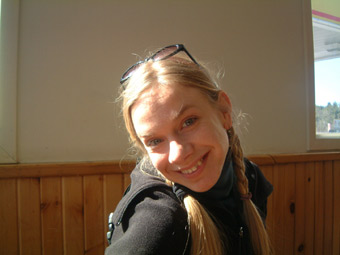
| |
|
|
description
composition
The one-week workshop is divided roughly into three
parts: In the first part we will build a flexible composition that will
come from a proposed movement material, some will be already included
into the technique class. The movement composition that will appear as
a result of the creative workshops will be possible to perform in
numerous versions (I will limit them down to five versions). Working
title of this part is Gatherers
This process will be followed by the second part,
which will be the most performative part, as we will perform our
movement structure over and over again in all agreed versions. Through
repetition, I expect that non-agreed possibilities will come through.
This surplus arrives similar to a river that shapes its riverbed
through the repetition, through the time. Working title of the second
part is Spring Water.
The last part of the workshop will summarise both
processes, Gatherers and Spring Water. Parallel to this process, we
will work with music as a dialogue between movement and sound, which I
work a lot with in my creations. The work with music will be introduced
already earlier in the workshop but in the last part the depth will be
the greatest. The last part is called Weavers, and will result with a
peculiar tapestry that we will weave together throughout the three-week
work.
Each part will take approximately one week but it's
difficult to say as it depends on participants; how will material be
received, how much time will take to diagest the proposed theme etc.
However, the outline is one week per one part. According to that will
develope also the technique class. Still, technique class will be a
more constant component than the creative workshop.
Contemporary Dance Technique class
Technique class has a starting point in three movement situations:
1. use of the floor in order to rise/lower and fall and in order to travel through the space.
2. tension/ release in a body during the motion. That will lead us to the work with dynamics of the movement.
3. push and pull, which will be mainly working in
pairs.
Throughout the class the idea is presented, developed, manipulated.
Sometimes we will also frame the movement idea we work with and thus we
result in a fixed sequence of movements that every participant can do
in unison with the others. As we start from a point of improvising with
a theme and then arrive to a common ground of a fixed phrase, one's
habits are challenged. This is a very important experience for every
dancer in order to expand their movement vocabulary.
After we reach that point we will go into the other
direction of individualising the common fixed phrase. This is a process
where every participant treats the fixed material as a basic score and
then draws the individual manipulation of the material. Thus one ends
up with a new sequence of movement unique to each participant.
bio
Work experience:
Own creations:
December 2004- Nabiralci (Gatherers) site specfic experiment, in collaboration with illustrator and puppetier Andrej ©tular
November 2003-January 2004-choreographed performance Kostanjevo rjava (Chestnut Brown)
May-June 2002- directed and choreographed trio Rebeka.
The rework of performance was in February 2005 with Christopher
Benstead and Tomaĺ Lapajne.
-February-April 2001, directed and choreographed performance Tipke,
-April 2000-Spetember 2004, choreographed and performed with musician John Sweeney for short site specific performances.
-September 1999-May 2000, created video piece
'Hisa/Nest' in collaboration with composer John Sweeney, dancer Petra
Zist and musician Ziga Golob -July/August 1998, choreographed and directed a site-specific piece 'Izvedenke'('Experts') -1997-2000,
collaborated with choreographers Snjezana Premus and R.Lucia
Baumgartner as a video maker for their stage and post producion work
Work with other companies, choreographers:
EN-KNAP:
-May-November 2003-working with Iztok Kovac and Julyen Hamilton in
project S.K.I.N.
-sept-December 2001, working in project Hu Die (choreographers: Iztok
Kovac, Julyen Hamilton and Denes Debrei);
-September 1998-February 2000, worked in 'Codes of Cobra' and in 'Far
from Sleeping Dogs' , and as an assistant director for their film
production 'Dom Svobode' (directed by Saso Podgorsek);
CHARLES LINEHAN COMPANY:
-July-October 2003, worked as dancer in creation of New Quartet.
-August-Ocotber 2002, worked as dancer in creation of duet Grand Junktion;
-August-October 2001, worked as a dancer in creation of Speak,Memory;
Teaching experience:
-Since September 2000-teaching at Arts High School- contemporary dance
technique and creative workshop.
-March-April 2002, teaching within intensive contemporary dance course
with Charles Linehan Company, St.Petersbug, Ekaterinburg, March 2002,
Lisbon CCB, April 2002;
-since 2001, teaching open classes in Dance Studio Intakt Ljubljana,
ZKO Kranj and Plesna Izba Maribor,(contemporary dance techniques and
creative workshops).
-June 2001-teaching creative workshop at The Place, London;
-March 2004, teaching contemporary technique in Toronto, Canada, and
creative workshop in Philadelphia, USA.
-April 2004, teaching workshop in Agon education programme in
Ljubljana;
-Spetember 2004, teaching at the Edge postgraduate performance group at
London Contemporary Dance School.
-February 2003, leading creative workshop within Gibanica festival in
Ljubljana.

|
|
Iztok Kovac, En-Knap, Slovenia
repertoire and composition
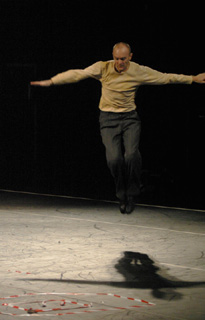
| |
|
|
description
Repertoire:
Basic tendency of repertory part lies in becoming
acquainted with movement specifics as En-Knap company developed it
since 1993 and for every participant to establish her/his own relation
to it.
The repertory part will contain:
-unpretentious warm-up featuring exercises on the floor, in the space, alone, with partnerand some group exercises
-specific movement idioms and repertory dance phrases from En-Knap productions
-power exercises and relaxation
We will be dealing with terms as:
-bubble (attention of the focus)
-home (safe, peaceful sensation of the gravity center of the body)
-separation (upper/lower part of the body in tourning/jumping/falling)
-body lines (body extensions untill the limits of the softness and elegance)
-staccato (sharp reaction on start and stop - suspension)
This course will be physically rather tiring and demands good physical skill.
Bring comfortable shoes and knee protectors.
Compostion:
"My intention is to suggest principles and devices I
developed in the last 10 years. Since my movement origin lies in
sports, my work is all about communication: "How do the people
interact?"
I want to create the atmosphere where every individual
depends on the collective, while only her/his technical and creative
input results as a group quality. Within the team everyone has enough
space and all my support to define and develop his/her own stage
presence and spontaneity/freedom.
But of course first the rules of the game and
collective alertness should be mastered!
The composition part will focus on two basic, opposite proportional
choreographic devices used in most of the En-Knap performances: 3Q and
Open Parts."
3Q is a choreographic instrument invented by Iztok
KovaŤ, defined as a system of structured coincidence/chance. It is
based on pre-determination of three motions of different expressive
qualities. The group of dancers consists of a leader of the sequence
(who in time-limited units and optional proportions switches from one
to another pre-determined motion) and other dancers (who react to the
leader's performance using three options, which are pre-chosen by
throwing the dice). These three options are limited to stop, copying of
leader's motion, or performing a contra-action, which they can either
improvise or fix by another throwing of the dice. Open Parts are inspired by the principles of group
ball sports. The element of chance is based on a set of rules through
which a designated individual the so-called chief has the possibility
of choosing between two modes of movement:
Fixed program - a prearranged composition known to all the performers and
Free program - either a prearranged composition known only to the individual performer or one that is freely improvised
The role of the chief is passed on to another performer via a simple verbal exchange.
The rest of the performers, the so-called tribe act as
a rhythmic and ambiental support to the program designated by the
chief. They can decide between four modes of movement: shadowing/copy,
stop/freeze, cut-up and grouping.
Suitable for musicians and actors as well.
bio
Iztok KovaŤ, solo dancer, choreographer and the founder
of En-Knap, an international dance company based in Slovenia, has one
of those creative energies which has enabled him, starting from
nothing, to bring Slovene contemporary dance onto the European and
world stages. KovaŤ's feature is an exceptionally wide dance-movement
repertoire, ranging from the experience of standard dances, jazz
ballet, Eastern movement techniques and sports to more sophisticated
dance techniques, which are found in the international network of
contemporary dance groups, schools and workshops. There are various
constants (his home town Trbovlje and its mine workers tradition,
commitment to collectivity, body discipline, body limits and freedom)
and variables (different musical paradigms, choreographic and
improvisational strategies and core themes) present in his work.
He made the international dance scene stand up and
take notice with his solo How I Caught a Falcon, which jumpstarted his
career and earned him the TimeOut London Dance and Performance Award in
1993. That same year, this award for visiting artists was also given to
Merce Cunningham and Ron Vawter. In 1993, under the wings of the
Klapstuk festival in Belgium, he founded the international dance group
En-Knap. He later returned to Slovenia and established EN-KNAP Dance
Company. In the 11 years of the company's activity, KovaŤ has
undoubtedly established En-Knap's unike trademark aesthetics inside the
European space. He has staged his ten evening length performances
(Spread your wings (You clumsy Elephant), Sting and String, Far from
Sleeping Dogs, Codes of Cobra, MoTenTion/Kaktus Unter Strom, The
Perfect Step?, Hu Die, Throw of the Dice, S.K.I.N., and MOZART - hype
as I wanna be_) and screened four award-winning short films (Narava
Beso, Vertigo Bird, Dom Svobode, Taming the Time) in over 75 cities
throughout Europe, as well as in the United States, Australia, Asia,
South America and the Middle East.

|
|
Jordis Jakubczick, Institute For Somatic Movement Studies (ISMS), Amsterdam, NL
technique and somatic studies
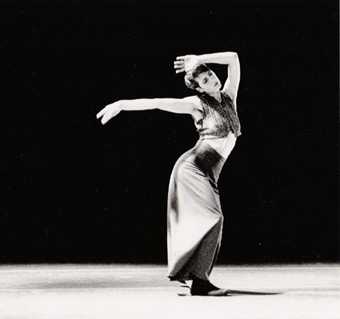
| |
|
|
description
Somatic Dance Technique
This dance training is designed for the beginner as
well as the advanced dancer. With a dynamic blend of various somatic
movement disciplines it intends to spark ones natural joy for moving.
The elements are:
New Dance Technique, with its roots in Modern Dance,
incorporating Release Technique, it attunes us to the natural physical
forces so as gravity and momentum. We develop a sense of grounding, to
than play with balance/off balance, central/peripheral movement and
maximise the potential of the natural body movement. The methods of Body-Mind CenteringR enhance
kinaesthetic awareness and a keen sense for where movement originates.
Differentiating the various body-systems (Bones, organs, muscles etc.)
and integrating developmental patterns, we find specificity in movement
quality and support for movement. Elements of the Somatic Movement Approach inform us
on dynamic anatomy to find our natural alignment, increasing ease, flow
and efficiency within moving. Beginning with a deepening floor work, the class
will proceed into dynamic phrase work across the space. Attuned with
the breath we move within the tides of our internal rhythms, enjoying
the inner and outer space. The somatic approach leads us to a deep
place of integration. Somatic Movement & the Creative Process
Consciousness and freedom within the body, variety of
movement expression and clarity of presence are the themes of this
course given by Jordis Jakubczick. It will introduce into the methods
of Somatic Movement coaching as they are taught at the Institute for
Somatic Movement Studies. Facilitating individual process of
transformation and creativity.
Through the study of living anatomy, guided imagery,
Hands-On exercises with partners and individual movement exploration we
discover the natural internal movement of our body. Hereby our inherent
body-intelligence unfolds and individual creativity arises, which will
lead into dance improvisations. In this course we will explore the inner rhythms of
specifically the arterial + venous blood, the cellular + intercellular
fluid, the Lymph and Cerebral Spinal fluid. Each fluid has its
fascinating way to be expressed within movement in a specific movement
quality, which again underlies the performance presence. By
experiencing the various movement-qualities our range of movement
vocabulary is extended and our presence is clearly defined. The course is open for anyone interested exploring
the body-mind relationship within creative movement and plunge into the
joy of dancing. I especially invite:
. Dancers and movers who wish to in deepen their physical consciousness and embody new movement possibilities.
. Anybody in the creative movement field who wants to
know more about the Institute for Somatic Movement Studies and apply
its methods into their work approach. bio
Jakubczick has been professionally trained in modern
dance technique (Cunningham, Graham, Muller) and ballet as well as in
release and improvisation techniques since 1986. In the early 90's she
studied with Bonnie Bainbridge Cohen and was certified as BMC
practitioner in'94 in Amherst/USA. During her training as Performance
artist at the School for New Dance Development in Amsterdam
(1991-1994), she integrated the methods of Somatic Movement into the
means of Choreography and performed her own work for the last 14 years
in Europe and the USA. She is a staff member at the ISMS and teaches at
the School for New Dance Development at tha AHK in Amsterdam. She is
registered as Somatic Movement Educator and Therapist with ISMETA and
is maintaining a private praxis, specialising in injury care and
prevention for dancers and other movement artists.

|
|
Katrin Essenson, SPA, Estonia
composition
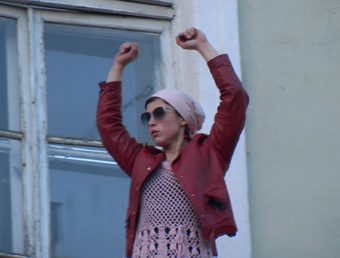
| |
|
|
description
Theory
We can classify the paradigm of performance ( dance
performances indeed ) through the class of elements with similarities
such as systems, structures, styles which ingenerally remain the same
but more probably constantly reconstructed and confirmed. Through
individual factors the biger differences come out and vary, such as
ideas, material, artictic approach, perceptions, individual approach,
context, reference - and according to choreography the particular body,
form and quality of movement - and there can be lots of possibilities
more. This improvisation and composition work-shop is
motivted from overall question - how to deal with process in order to
work with paradigm of performance. I realy on my experience and
knowledge, also some theoretical material I have read up to work on
some ideas I've been focused on recent times. How to work more
efficiently, how to materialize our ideas more enunciate ways as the
process has an equivalent influence to the final product and therefore
also the working methods are constantly calling for reconcideration and
confirmation. The work-shop's main theme is to observe aswell as put in
practice process of perception and reproduction, to be more percise the
phenomenon of image or productive image. Focusing on the phenomenon of
imagery is important to do a difference that image is not connected
only with simple methaphor. We see imagery, we reproduce them, we keep
them in our memorys - envisioning is whatsoever except the direct
product of imagination. We can say that using co-operationally the real
and irreal functions of imagery we can activate our actions. These are the questions what intrests me - to
activate productive imagination as operating possibility in order to
increase awareness how we work with our ideas. How to be closer to pure
sublimation. As Jean-Paul Richter writes: " Reproducive imagination is
prose of producive imagination."
Practice
.what we will work on through the imagery:
There would be presented collected tools as a starting
point/s and what I would call tasks. They would be used by means of
games logic, building structures, just to name some of them. In order
to not spill over by the varietys of different possibilitys it's
relevant to rely on some parameters. To name some aspects we focus on;
parameters as space, relation, movement, also observaton,
interpretaion, manipulation, description, material and etc. Ibidem
maintaining the objectivity to the task aswell as input of subjective
interpretation. Also to use methods like observation, interpretation,
mediation and develop action and relations through ones own
inerpretation and etc. Further explanations will follow underway in
process of work. Last days of the work-shop we would finish our
working day with a longer session in order to use all previously
practiced ideas, systems and structures in imporvisation in this very
basic meaning - without imagining actions forehand.
bio
Katrin Essenson, ( born in 1973 ) has been creating
dance performances since 1998. She graduate from the Tallinn
Pedagogical University choreography department and at the moment
studies Interdisciplinary Arts in the Estonian Academy of Arts. In
1999-2000 she worked with Sasha Pepelyaev Kinethic Theatre (APART) in
Russia. In January 2000 was founded creative union S.P.A. by Taavet
Jansen and Katrin Essenson, this is meant to be a creative and
concentrated and collaborative field for artists from different art
fields. S.P.A. has also done co-operational productions with Kanuti
Gildi SAAL/2.tants, United Dancers of ZUGA, Plastik Studio, artist
group WILHELM GROENER etc. Since 2000 working as a freelancer
choreographer-dancer-teacher.
Her works have been performed at various dance festivals in Estonia, Germany, Poland, Netherlands, Sweden, France and etc.

|
|
Maida Withers, USA
improvisation
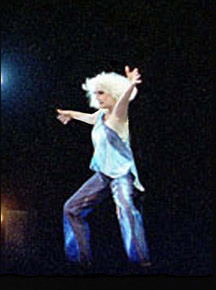
| |
|
|
description
bio
Maida Withers (USA), dancer, choreographer,
videographer, and teacher, is the founder and artistic director of
Maida Withers Dance Construction Company (1974). Maida teaches advanced
post modern dance technique, choreography, improvisation, and trends in
performance art as a professor of dance at The George Washington
University in Washington, DC where she has directed the MFA graduate
dance program in choreography and performance. Maida, a powerful and
commanding performer, has created a significant and distinctive body of
work for her company, over 75 dances of breadth and vision involving a
process of experimentation, innovation and collaboration. Withers
movements are released, nuanced, dynamic through space, with
originality and clarity in form. Her works reveal an ongoing interest
in juxtaposing dance and technology. She has created works with
rotating loudspeakers, laser beams, wireless cameras, and video
installations - always with "live" music. Withers has initiated and
directed several large-scale new media projects, collaborating with
visual and performing artists, scientists, anthropologists, and others.
Withers has toured extensively internationally engaging in various
projects in such diverse places as Guatemala, France, The Netherlands,
Japan, China, Hong Kong, Korea, Brazil, Finland, Venezuela, Mexico,
Germany, and others. Withers began touring and teaching in Russia in
1997 at the Volgograd Festival and has been back to Russia for
residencies and touring in St. Petersburg at Open Look (2000, 2003),
Arkhangelsk, TOUCH (2003, 2004), Art Angar in Solovki (2004), "Isadora"
Festival in Krasnoyarsk (2005), and others. Her dance video works have
been shown at the IMZ in Austria, at AFI, Kennedy Center for Women in
Film, the DC International Film Festival, the DC Environment Film
Festival, often as part of her performances, and have won cable
television recognition. Maida is the founder and co-curator of the D.C.
International Improvisation Festival now in its 11th successful season.

|
|
Mart Kangro
composition
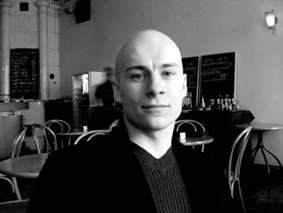
| |
|
|
description
As a choreographer I'm not so much focused on the
movement research in terms of createing a new way of moving no one has
seen before but rather on the meanings of signs what one spacific
movement or an act carries in the time-space of the theatre. I'm
intrested in how do we perceive what is been performed and what are
these factors which influence the way the audience reads the given
information. By taking away all unnecessery information we are allowed
to see the essence of things or rather what these things might mean in
this specific context. Therefore reduction as a method has an importent
role in my work.
The workshop is devided into two parts. The first part
is an intensive warm up based on the mixture of different dance
techniques including elements of release, contact improvisation,
martial arts and even sport games. The second part is focusing on the
composition and on the theatre's semiotics. There the produced material
will be analysed, deconstructed and reproduced in different playfull
contexts in order to manipulate the hidden codes of the production of
choreography. bio
Mart Kangro, choreographer, performer, graduated from
the dance department of Tallinn Pedagogical University in 1996. For
some years he was member of the ballet company of Estonian National
Opera where he created a short piece "Many Things in Life Remain Unseen
Anyway" in May 2001. His first solo work "START. Based on a True Story"
was premiered in the beginning of 2001 in Von Krahl Theatre, Tallinn.
In 2002 START was selected by Aerowaves network to be presented at The
Place Theatre in London. In 2002 Mart was invited to take part as a
choreographer in Thomas Lehman's "SchreibstŁck" which premiered at the
Tanz im August festival in Berlin. His collaboration with Thomas Lehmen
continued in 2004 when he participated in project called Functionen. In
december 2004 his new piece "Out of Functions" was premiered. Starting
point for this performance was tool box "Functionen" by Thomas Lehmen.
One year earlier His second solo "Mart on Stage" had premiered in
Valancienne, France. He was a leading member of music and dance
improvisation group Proimpro. As a dancer he has collaborated with Mai
Murdmaa, Charles Linehan, Xavier Le Roy, Thomas Lehmen and others.

|
|
Melina Mastrotanasi
technique
| |
|
|
description
"I teach a Physical contemporary class inspired by the
vocabulary and work of wim vandekeybus, and teachers such as the
swedish choreographer kajsa Giertz and "flying low " techniqe of
David Zambrano. I dont work so much with a strikt
structure, i try to variate the class. mixing floorwork,contact
impro and different moving combinations.
bio
2000-2002-Ultima vez, Wim Vandekeybus Brussels
Creation, "Scratching the innerfields" worldtour 2001 and revival "What
the body does not remember" 2003-2004- Byteatern,Sweden Director Kajsa Giertz Creation, "THe sound of a body" and "Indras ?ra"
2004- Cirkus Cirk?r,Sweden creation 99%unknown. Directors assistant.
2005-Riksteatern, Kajsa Giertz. creation "meningen med livet"
2005-starting a new performing group in stockholm, sweden creation starts august 2005
Education
1994-1997 Royal Swedish Balletschool in stockholm

|
|
Ronit Ziv, Izrael
composition
| |
|
|
description
After searching between dance, and theatre I am very
much concern in taking the work in to the extreem, the key for
that as a performer is in finding a strong connection between body and
soul.
Each class has two parts:
On the first part we will learn to prepare our body and
mind through a release techniq that include floor work, breathing,
movement in space and Yoga and on the second part, the dancers
will experience the repertoire of my works, and as well I
will leed them through improvisation and different kinds of games. The
games will be either theatrical either concern with space, time,
relations and senses.
The main activity will be different from each day, so it will `open` the dancer to a creativity atmosphere.
The focus is on the develpment of the `inner voice`, of
each one of the dancers and on the strong connection to the body and
soul. bio
Ronit Ziv received the prize of the minister of
colture and education for the choreographer of the year 2002. Her work
`Rose Can`t Wait` won first prize in `Shades in dance` 1999 and at the
Jerusalem Academy of dance and music choreography competition. Ronit
created for `Bat-Sheva` ensemble, CNDC L`esquisse, Muza dance company,
Noa Dar company, `Galilidance` company in Holland and `Instavel`
company in Porto: 1999`It will end in tears`, 2000 `Marilins night`
2001 `Undress` 2002 `Botz` 2003 `Handmade`2003 `Steam`.
Following the success of `It will end in tears1 she was invited to
create a piece for CNDC L`esquisse, Angers, France. The piece `Apres
Midi` was presented in France, festival Marsseile and Portugal.Ronits
work `Rose can`t wait` was invited to appear with Galilidance company,
Holland and in Pina Bausch festival. She performed an evening program
with Instavel company at the Rivoli theatre in Porto, Portugal.
Following her succes un `Fabbricaeuropa` festival She was invited to
perform her evening program `Beauty free- 4 duets` in San-Giminiano
festival, Enzimi festival, Bassano festival, Italy.

|
|
Rose Akras, Institute For Somatic Movement Studies (ISMS), Amsterdam, NL
technique and somatic movements
| |
|
|
description
Rose's classes have a strong basis on the use of the
body systems (Skeletal/Organs/Fluids/ etc) as for improvisation,
composition or technique classes. Through her long experience and
contact with different dance techniques (Ballet, Limon, New Dance) and
Somatic Movement training (Alexander Technique, Body Mind Centering and
Somatic Movement), Rose Akras has developed her own style of teaching.
The search for body awareness practices has grown considerably among dancers in the
last years, mainly to solve and prevent injuries. But in most cases the
experiences of a body insight; are limited to the private session
and there is a big chance that the improvement achieved in the session gets lost when the dancer starts moving in class.
Rose's teaching is based on the idea of integrating the somatic
approaches in the dance classes.
Experiencing
how to move from the bones or from the organs, can not only prevent injuries
but specially improve technique and open up new ways of moving.
Technique
The class unites principles of new dance, with emphasis on floor work (facilitating
the process of going in and out of the floor), and modern dance technique. The
class is always adapted to the students needs to more floor work or more
standing technique.
The basic use of the body systems underlies the class
to facilitate movement understanding and execution (for instance,
moving from the bones clarifyform and directions in the space).
Improvisation/Composition and Somatic Movement:
This class is based on the exploration of the Systems
of the Body (Skeletal, Fluid,
Organic, Nervous, etc) as a way to deepen the body awareness of the
dancers and
expand their personal movement vocabulary. By exploring anatomy
and physiology through action, the participants experiences the
movement qualities of bones, organs, fluids, etc. and how this
qualities can give support to different dynamics of movement.
By working with the principle of refining the
perception of the students as movers and observers, this classes can be
as useful to dancers as to future teachers and choreographers.
The classes are always adapted to the students needs and the material can be more
developed towards technique facilitation and observation or more towards a
breeding environment for creative processes.
bio
Rose Akras was trained in ballet, modern dance (Lim?n
Technique) and new dance techniques in Brazil, U.S.A. and Holland. She
has been working professionally in the dance field for around 20 years
as a dancer, creator and in the last 10 years as a teacher.
Between 1995 and 1997 she studied at the School for New Dance
Development where she deepened her interests in the integration of
somatic work and dance training and creative processes. She took the
Certificate Somatic Movement Training at the between 2000 and 2002 at
the ISMS, directed by Jacques van Eijden in Amsterdam and is now a
current assistent teacher at the training. She has been working as a
guest teacher at the Rotterdamse Dansacademie and School for New Dance
Development in Holland and is current guest at the Performing Arts
Bachelor Course at the PUC University of S. Paulo. Rose Akras travels
every year to her native Brazil, teaching at dance schools and
professional dance companies around the country.

|
|
Yossi Berg
technique, repertoire, laboratory
| |
|
|
description
release technique
we will try to find the sensation and awareness in
working using our skeleton, the use of weight and grounding ourselves
to the floor. We will use different images to pass through the
information to our bodies. Working with our main pivot paying attention
to where the movement begins and where it ends. The first part of the
class will take place on the floor and from there we will take it up
until the final combination. Momentum, musicality, release, vitality,
ingenuity will be among our interests in our meeting.
repertoire classLearning
excerpts from some of my last works putting an emphasis on presence,
clarity and performance. Each meeting will deal with different material
trying to challenge the virtuosity of the participants and finding new
throughways of looking at dance. The place where physicality and senses
meet to create a whole focused imaged. Challenging elements as
coordination, speed of movement and finding emotion in each moment. the laboratory
This will be our playground where we will use our instincts in order to
create fresh moments full of alertness to ourselves and others. This is
the place where everything can become both serious and ridiculous,
where each individual can check his/her limits and go beyond it. We
will meet different tasks and improvise alone or in a group. We will
try to talk our thoughts and transfer it to movements, question our
decisions while dancing and free the "real us". The ability to create
an electric current as an outcome of non stop listening. The laboratory
is suitable for anyone who would like to deal with a research of the
emotion, body, movement and existential present. How can we improvise a
show? bio
Born in Israel in 1976, Berg is a dancer and an
independent choreographer. In 2003, he was awarded the first prize of
the "International Serge Diaghilev Competition of Choreography Art".
Danced in the Bat-Sheva Dance Company (1994 - 2000), and in 2000 was
invited to work with Loyd Newson for the British "DV8 Physical
Theater". Between 1999-2004 he choreographed different works for the
"Curtain Up Festival" which were invited to perform in Europe.
In 2003 created and performed his work "Optic" for
the "Curtain-Up Festival 03" and later on, during 2004, at the 'Summer
Jazz Festival' in Rome, Italy. Berg Has been invited to create for the
Polish Dance-Theater , for the Osnabruck Opera in Germany, Muza Dance
Company, Bat-Sheva Ensemble and others. Berg is the recipient of the
Israeli Ministry of Culture Choreographer's and Dancer's Award for the
years 2001, 2003, 2004.

|
|
Ian Mwaisunga
Tansania;

| |
|
|
description
East-African dance
Dance is an universal language expressed by the body
through various extra ordinary body movement. When we speak about East
African dance it also signifies events.
In Tanzania we have more than 125 tribes, and all the tribes have their
own traditional dances and culture. The dances normaly take place in
different occasions. e.g. Marriage, rituals and before and after war.
Mostly when dancing we use flat feet and really bend low, some hit the
ground very hard. This definately tells us that most of the East
African traditional dances have big contact with the ground. MY CLASS
I would like to explain a little about my class.
1. It will start with a warm up of the whole body because the African dances use almost all parts of the body.
2. I will give African dance movements diagonally
across the floor. This will make the students get to use the movements
and even make them learn phrases easily and fast. 3. I will teach dances from South Eastern and Central parts of Tanzania.
Here are the explanations of the dances i expect to teach.
(A) NGOKWA This is dance from Southern Tanzania. It
comes from a tribe called Wamakua. The origin of this dance is a ritual
where people pray for rain during drought. But nowadays due to changing
times people have changed it to acelebrational dance since they no
longer believe in rituals although some still do. It is celebrated
during Eid El-Fitir; this is after fasting during the holy month of
Ramadhan
(B) MALIVATA This dance is from South-Eastern
Tanzania. It comes from a tribe callled Wamakua. It is performed during
celebration for example: after a good harvest, during initiation rites
and during other happy events and moments.
(C) MAWINDI
This dance is from central Tanzania. It is from a tribe called
Wanyaturu. Its aim is to push people to work because without work there
is no life. So, this dance is performed during a work process or after
a big job has been done as an encouragement hence it is a work dance. |
|
Serge Ricci, Cie Mi-Octobre, France
technique&
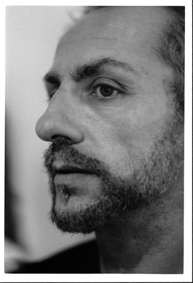
| |
|
|
description
BODILY REFLECTION
Preparation of the basic tools
Technical classe directed to :
. Release of the joints
. Strengthening of the support
while approaching the danced movement and its projection into space.
EXPLORATION OF THE BODY
"Gathering of the possibilities in the research of the movement and its relation to the space."
Every atelier will be the opportunity to bring out the
qualities and the prospects of a working team.
These workshops propose at the same time a precise study of the
starters of choreographical composition (organized around the
choreographical work of the Company Mi-Octobre) and a more personal
exploration of the different ways to improvise and to invent.
Starting from precise stages, horizontal work from the floor to a
standing position, listening to our sensations, restoring the notions
of weight energies, reflexions of tensions, releasing and
"laisser-faire".
This work will be executed in small groups, one by one
or two by two (partnering), in order to rediscover to intuitive
qualities of the body and to develop a different approach of the danced
movement.
An opening toward a selfdiscovery process that would lead to the
opening of a choreographical language.
|



